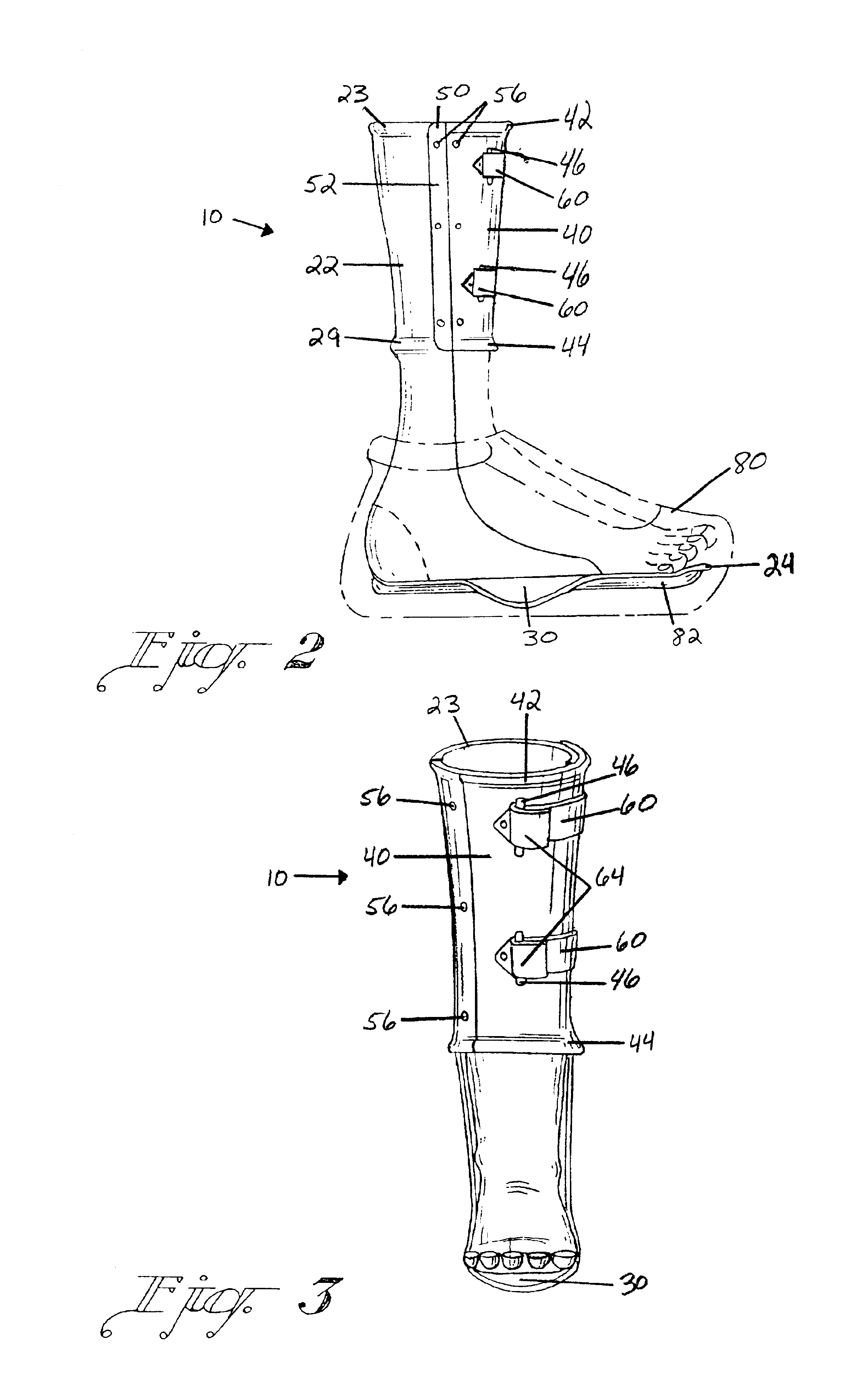Persons diagnosed with diabetes are typically classified as slow healers and are prone to debilitating
foot ulcers due to both neurologic and vascular complications.
Accordingly, any cuts or trauma to the foot of a
diabetic patient with advanced neuropathy often go unnoticed for lengthy periods of time.
At present, there is no known cure for neuropathy, although strict control over glucose levels has been shown to slow the progression of the neuropathy.
Further, a
deformity commonly known as “charcot foot” occurs as a result of decreased
sensation.
Microfractures in the bones of the foot go unnoticed and untreated, resulting in disfigurement, chronic swelling and additional bony prominences.
Microvascular
disease is an additional problem for diabetic patients, which can also lead to
foot ulcers.
It is well known that diabetes often results in a narrowing of smaller arteries, which narrowing cannot be resolved surgically.
Known orthotic devices for the treatment of plantar ulcers and other foot abnormalities, however, suffer from a number of deficiencies, several of which are described hereinafter.
The '044 Patent does not disclose the use of a permanent orthosis, which may be easily worn to heal and close a plantar ulcer, and additionally, to maintain the
plantar surface in a healed unulcerated state.
Further, the '044 Patent does not disclose an orthosis, which may be easily donned and inserted inside a patient's modified street shoe.
These patents, which issued to Lamont, do not disclose the use of a permanent orthosis, which may be easily worn to heal and close a plantar ulcer, and additionally, to maintain the
plantar surface in a healed unulcerated state.
Further, the Lamont disclosures fail to disclose an orthosis, which may be easily donned and inserted inside a patient's modified street shoe.
The '942 Patent, does not disclose the use of a permanent orthosis, which may be easily worn to heal and close a plantar ulcer, and additionally, to maintain the
plantar surface in a healed unulcerated state.
Further, the '942 Patent fails to disclose an orthosis, which may be easily donned and inserted inside a patient's modified street shoe.
The '639 Patent, thus, does not disclose the use of a permanent orthosis, which may be easily worn to heal and close a plantar ulcer, and additionally, to maintain the plantar surface in a healed unulcerated state.
Further, the '639 Patent fails to disclose an orthosis, which may be easily donned and inserted inside a patient's modified street shoe.
The '604 Patent does not disclose the use of a permanent orthosis, which may be easily worn to heal and close a plantar ulcer, and additionally, to maintain the plantar surface in a healed unulcerated state.
Further, the '604 Patent fails to disclose an orthosis, which may be easily donned and inserted inside a patient's modified street shoe.
It is further noted that the '380 Patent does not disclose the use of a permanent orthosis, which may be easily worn to heal and close a plantar ulcer, and additionally, to maintain the plantar surface in a healed unulcerated state.
Further, the '380 Patent fails to disclose an orthosis, which may be easily donned and inserted inside a patient's modified street shoe.
The '324 Patent does not disclose the use of a permanent orthosis, which may be easily worn to heal and close a plantar ulcer, and additionally, to maintain the plantar surface in a healed unulcerated state.
Further, the '324 Patent fails to disclose an orthosis, which may be easily donned and inserted inside a patient's modified street shoe.
It is noted that due to the conforming nature of the brace, it is inconspicuous when worn for the upper portion of the brace may be situated within the confines of the trouser leg of a user, and the lower portion of the brace may be situated within a street shoe.
The '886 Patent, however, does not disclose the use of a permanent orthosis, which may be easily worn to heal and close a plantar ulcer, and additionally, maintain the plantar surface in a healed unulcerated state.
The '077 Patent does not disclose the use of a permanent orthosis, which may be easily worn to heal and close a plantar ulcer, and additionally, maintain the plantar surface in a healed unulcerated state.
Further, the '077 Patent fails to disclose an orthosis, which may be easily donned and inserted inside a patient's modified street shoe.
In this regard, it has been repeatedly shown that the cited patent disclosures do not disclose the use of a permanent orthosis, which may be easily worn to heal and close a plantar ulcer, and additionally, maintain the plantar surface in a healed, unulcerated state.
Further, the cited prior art fails to disclose an orthosis for the treatment of plantar ulcers comprised primarily of molded
polypropylene or a similar
polyester resin, which may be easily donned and inserted inside a patient's modified street shoe.
None of the aforementioned remedies, however, offer a permanent solution to unloading or relieving pressure at the ulcer site.
 Login to View More
Login to View More  Login to View More
Login to View More 


